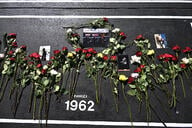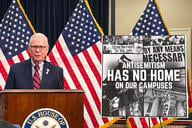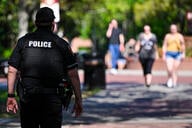You have /5 articles left.
Sign up for a free account or log in.
In the aftermath of the Virginia Tech shootings and revelations about the killer’s violent writings, creative writing faculty everywhere faced a stark reminder of the occupational hazards they face in distinguishing fiction from potentially scary fact, in cultivating an atmosphere fostering free expression and creativity while maintaining standards not only of art, but also of safety. The challenges inherent in that process have proven to be anything but abstract at San Jose State University, where a lecturer opted to stop teaching his creative writing class in April after receiving a disturbing student assignment.
Mitch Berman, director of San Jose State’s Center for Literary Arts, spoke with the provost April 23 about a story turned in prior to the April 16 Virginia Tech shootings, Pat Harris, a university spokeswoman, said Wednesday. The university police department ultimately determined the student did not pose a threat, but several of the remaining class meetings for the undergraduate fiction course were canceled, with two substitute instructors from the English department teaching the balance of classes this semester.
The story -- described by the student newspaper as "a 17-page fictional narrative about an English student who convinces a vampire lover to kill the student's 'unethical, wicked' professor -- features, of course a fictionalized professor whose quotes are so similar to Berman's that, as he said, "the students and I recognized my portrayal in them."
"The student's story created a great deal of anxiety, and several other students wrote me during the aftermath of the shooting at Virginia Tech (the story was written before the shooting) to question their own safety in the classroom. I view my primary responsibility as that of maintaining a safe environment that is conducive to learning. It was clear that the student's story had created an atmosphere of conflict in the classroom which would make learning very difficult," Berman said via e-mail. To alleviate the "atmosphere of conflict," Berman proposed either teaching the course online or hiring a substitute (the students, he said, ultimately favored the latter option).
"I've been teaching full-time for 10 years. I've received many gory stories and stories that were not to my taste," he added in a telephone interview Wednesday night. But this particular piece, he said, "crossed every conceivable line including lines I didn't know were there."
"Nobody has ever created a character based on me that has come to any harm at all," Berman said -- adding that he thinks the university's response serves as a key early test of academe's ability to adjust to the realities of a post-Virginia Tech world.
"Of course episodes like the one concerning Professor Berman are quite rare," Scott Rice, chair of San Jose State's English & Comparative Literature Department, said in an e-mail Wednesday. "On the odd occasion that a writing instructor receives a disturbing paper, it usually involves a student who seems suicidal. Our practice is to refer such a student to Counseling Services, sometimes even taking the precaution of walking the student over to insure that he or she does receive help."
"In the Berman case we thought that the likelihood of violence was very slim; nevertheless, we chose to err on the side of caution and arrange for a substitute," Rice continued. "The arrangement seems to have worked out well for all parties concerned. We have to wonder if the Virginia Tech episode will not inspire a wave of psychological copycatting -- students confecting violent narratives just to pull their instructors' strings."
Three different units within the university – academic affairs, counseling services and the university police department – responded to the situation, Harris said. Upon interviewing the student and the professor, the police department found that the student had not broken any laws. “We still did our best to accommodate the professor’s concerns of course, but in the professional judgment of counseling services and the university police department, the student was not a danger to himself or anyone else,” Harris said.
Alan Soldofsky, director of creative writing at San Jose State, declined to comment on the particulars of the incident, but said via e-mail that the university’s creative writing faculty have had informal discussions about the issues at stake, and pointed out that the Academic Senate has conducted a more formal review of campus procedures in the case of a student emergency. In general, Soldofsky wrote he would be inclined to err on the side of caution in light of the Virginia Tech shootings. “However, by taking student writing seriously when it contains threats of violence -- direct or implied -- to another member of the university community (student, faculty, or staff member), does give an individual student the power to intimidate instructors with whom he or she may have disagreements or to seek attention from the instructor or from class members in disruptive and negative ways," he said.
“As for my own point of view, I see creative writing not so much as a form of self-expression (or in the case of problem students, acting out), but of learning to express one's 'otherness,' in the sense of being able to use one's imagination to devise stories or poems out of, as Keats called it, one's 'negative capability.' That is the ability not to be yourself and not to put your own limited self-interested point of view into one's creative writing. And to hold contradictory emotions and ideas together in your mind at once without judgment. To be as Emily Dickinson called it ‘a nobody.’”
“In that sense, a threat of violence directed specifically toward a member of the university community in a creative writing class represents a student's failure of imagination, and should be seen as cry for help or cry for attention,” Soldofsky said, describing the need of the instructor in that case to judge the correct course of action to protect him/herself and the students (with the guidance and support, he added, of the institution). “But of course,” Soldofsky said, “the individual student's rights must also be considered and be protected, up to the point when that individual student's story or poem violates the rights of others.”




